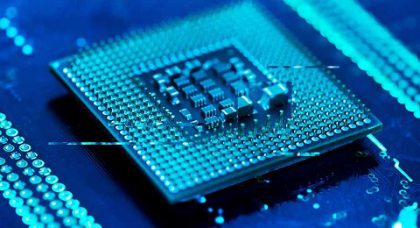August 25, 2019 – Hewlett Packard Enterprise (HPE) announced today it custom-designed a new supercomputer for NASA’s Ames Research Center to support modeling and simulations of entry, descent, and landing (EDL) for the agency’s missions and Artemis program, a mission to land the next humans on the lunar South Pole region by 2024. The new supercomputer, which NASA Ames has named “Aitken,” is an initial development of a four-year, multi-phase collaboration between HPE and NASA Ames.
Aitken, named after Robert Grant Aitken, an American astronomer specializing in binary star systems, will run thousands of complex simulations more quickly at 3.69 petaFLOPs of theoretical performance to enable accurate and safe landings on the moon.
Aitken is based on the HPE SGI 8600 system, an end-to-end, purpose-built high-performance computing (HPC) platform, which includes special liquid cooling capabilities for optimal energy efficiency. Aitken is located in NASA Ames’ new modular supercomputing facility, based on a Modular Data Center (MDC) approach jointly developed with HPE, to deliver advanced HPC solutions that drive greater efficiency and significantly reduce electricity and water use.
The new facility, based in Mountain View, California, will combine native Bay Area temperature and evaporative methods to cool the supercomputer, replacing the need for a cooling tower and millions of gallons of water.
“HPE has a longstanding collaboration with NASA Ames, and together, we continue to build innovative HPC technologies to fuel space and science discovery that increase overall efficiency and reduce costs,” said Bill Mannel, vice president and general manager, HPC and AI, at HPE. “We are honored to have designed the new Aitken supercomputer and power capabilities for humanity’s next mission to the moon.”
About Aitken
HPE designed the NASA Ames’ new supercomputer using the end-to-end, purpose-built HPE SGI 8600 system that integrates compute, software, networking and other IT infrastructure solutions from its robust ecosystem of partners, including:
· 2nd Generation Intel® Xeon® Scalable processors for advanced compute performance
· Mellanox InfiniBand to enable scalable bandwidth for high-performance networking
· Schneider Electric SmartShelter Containers that enable easy-to-deploy, prefabricated IT infrastructure packaged within a secure, weather proof, fire-rated, data module for remote or special applications
Other features include:
· 1,150 nodes, 46,080 cores, and 221 TB of memory
· 3.69 petaflops of theoretical peak performance
· Power Usage Effectiveness (PUE) of 1.03
To learn more about HPE’s HPC solutions and key industry collaborations across government, academic and commercial sectors, please visit https://www.hpe.com/us/en/solutions/hpc-high-performance-computing.html
About Hewlett Packard Enterprise
Hewlett Packard Enterprise is a global technology leader focused on developing intelligent solutions that allow customers to capture, analyze and act upon data seamlessly from edge to cloud. HPE enables customers to accelerate business outcomes by driving new business models, creating new customer and employee experiences, and increasing operational efficiency today and into the future.












